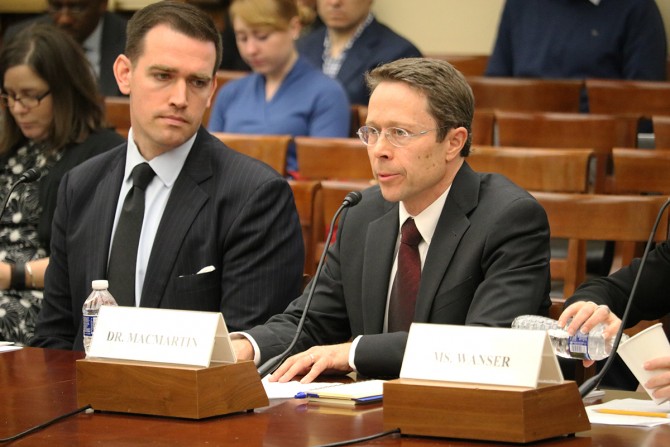Geoengineering might address climate change, MacMartin tells Congress
By Rachel Rhodes
Geoengineering could be a valuable part of a comprehensive strategy for managing climate change impacts if future research is integrated with the overall United States’ climate science research effort, said Cornell expert Douglas MacMartin.
MacMartin, senior researcher and lecturer of mechanical and aerospace engineering for Cornell Engineering and a fellow at the Atkinson Center for a Sustainable Future, presented research on geoengineering in testimony to the Energy and Environment Subcommittees of the House of Representatives’ Committee on Science, Space and Technology in Washington, D.C., Nov. 8.
Geoengineering, also known as climate engineering, encompasses two types of technologies: carbon dioxide removal and sunlight reflections methods. Carbon dioxide removal technologies refer to processes, such as direct air capture, that address the cause of climate change by reducing atmospheric carbon dioxide concentrations. MacMartin said: “The problem is that current strategies for carbon dioxide removal are not at scale or are too expensive to put a dent in the 40 billion tons of carbon dioxide emitted by humans each year. We don’t have any ideas that are scalable, cost-effective and have low local impact. If we don’t start this research now, it won’t happen.”
Sunlight reflection methods, including stratospheric aerosol injection, could counteract the effects of climate change by cooling the Earth. “It is plausible that limited use of sunlight reflection methods, in addition to cutting emissions, could reduce some of the impacts of climate change,” MacMartin said. Research published by MacMartin Nov. 6 explores the viability, impacts and limitations of sunlight reflection methods, but he testified that considerable uncertainty remains about the side effects and risks of using these methods to address climate change.
“Reducing greenhouse gas emissions continues to be the most important component of responding to climate change,” he said. “It is clear that we need to get to net zero carbon dioxide emissions. The question is how we do that, because it can’t happen overnight. I can imagine using carbon dioxide removal in the long term, while avoiding loosing parts of the Antarctic ice sheet by using sunlight removal methods to keep temperatures down in the short term.”
Rep. Paul Tonko (D-NY) asked about next steps in geoengineering research. MacMartin replied, “We start by saying that if we want to support informed decisions in 10, 15 or 20 years, we need to be careful about documenting the uncertainties and propagating those through existing climate models. If there is something uncertain about the microphysics or chemistry, it is important that we determine how such uncertainties influence our decisions and conduct experiments designed to resolve those uncertainties. That is the type of research we need to be focused on.”
MacMartin concluded his testimony by highlighting the role of geoengineering in addressing climate change. “The risks of future climate change are sufficiently concerning that we may need to consider all of the options at our disposal,” he said. “I conclude that it is essential to conduct focused, goal-oriented research in geoengineering to support informed decisions but reiterate that this needs to be in addition to the work of reducing greenhouse gas emissions and not as a substitute.”
Rachel Rhodes is a public affairs and media relations specialist in Cornell’s Washington, D.C., office.
Media Contact
Get Cornell news delivered right to your inbox.
Subscribe